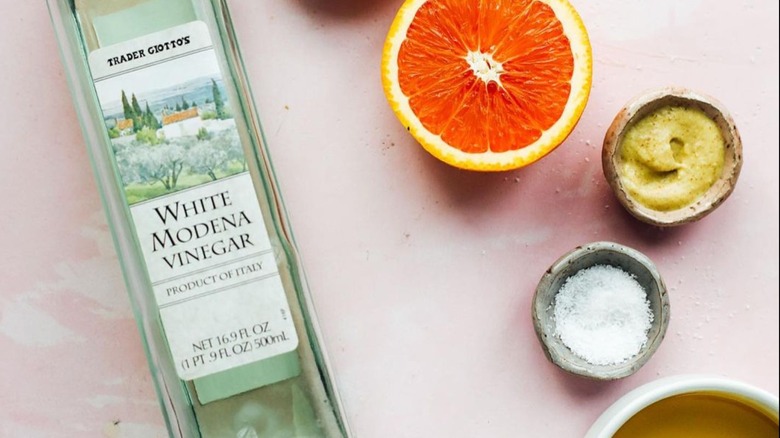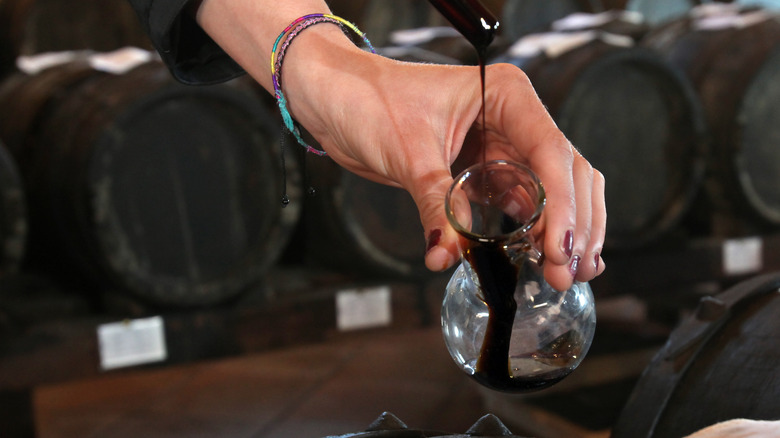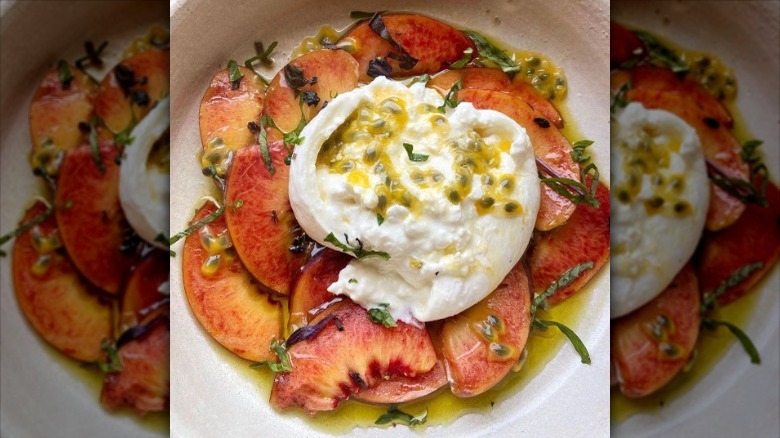Why Chefs Prefer White Balsamic Vinegar To The Regular Stuff
Your shelves at home might already be overloaded with all the different types of vinegar out there, but there is one more that you need to add — white balsamic vinegar.
If you know about balsamic vinegar, then you already have a good idea of the type of powerful flavor that this condiment can bring to a vinaigrette, glaze, or sauce. Make no mistake, though; this isn't some watered-down cousin to classic dark balsamic vinegar. It has a few key differences but brings the same sweet-tart complexity without the dark color and syrupy texture, which is why chefs love working with it.
One of the best qualities of white balsamic is its golden hue. Chefs love working it into recipes for its aesthetic values because it can easily stand in for classic balsamic without turning the recipe purple. That means no more brown, muddy vinaigrettes or sauces. Things can stay bright and clean visually and still taste exceptional.
How is white balsamic vinegar made?
White balsamic vinegar follows a similar method to classic balsamic but isn't nearly as intensive. Both are made with Trebbiano grape must, which is the processed skins, juice, and pulp of the grape. They are both then cooked down into vinegar and aged. While classic balsamic is cooked in the kettles until the grapes caramelize and turn to the dark color we're familiar with, white balsamic is cooked in pressure cookers that prevent it from caramelizing. This preserves the color and doesn't let the sugars take on the usually syrupy viscosity.
Both of these vinegars are then aged in barrels, but a true balsamic vinegar has to work its way through several different barrels over the course of years. White balsamic vinegar isn't aged nearly as long, but it does spend some time being barrel aged. The result is something that has a toned-down version of the bright, fruity acidity you would get from apple cider vinegar, but with more of the flavors that you would expect from classic balsamic vinegar.
How to cook with white balsamic vinegar
White balsamic vinegar can be used any way that you would normally use a classic balsamic. It can go into an easy balsamic vinaigrette, deglaze a pan, or add acidity to a sauce. Chef David Nayfeld of San Francisco's Che Fico told Bon Appétit that he loves to pair it with butter for roasted Brussels sprouts that go in a chopped salad, but this flexible ingredient can make its way into all sorts of recipes.
Some of the best ways to work with it are also some of the most simple. White balsamic vinegar's clean flavor makes it a great finishing acid. Instead of spritzing a lemon over a finished roast chicken, pork tacos, or steak, you can add a quick drizzle of white balsamic vinegar instead to balance out those fats with acidity and add a pop of flavor as well. It also pairs well with fruits and would sub in perfectly for classic balsamic vinegar in this balsamic and black pepper strawberries recipe. Or just use it to add a punch of acidity to apples, citrus, or grilled peaches.


